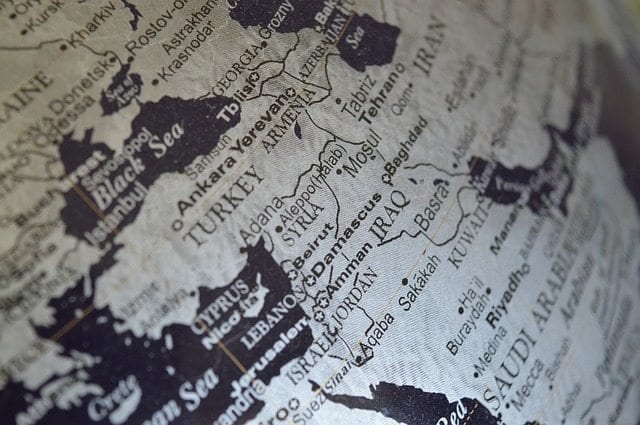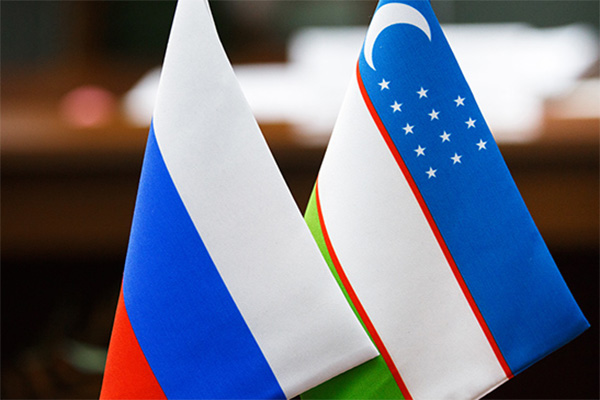- In response to any Turkish attack on the Syrian Kurds, the United States has the power to indirectly sway investor confidence in Turkey largely because of the lira’s inherent volatility and the structural weaknesses of its economy.
- Turkey can’t do as much economic damage to the United States, but it can create problems for Washington in the Middle East.
- Ultimately, the United States will limit the economic and diplomatic damage it can inflict on Turkey, in part because both wish to maintain the security and economic benefits their relationship provides.
U.S.-Turkey relations have rarely been anything but combustible. In the middle of January, however, U.S. President Donald Trump poured fuel on the fire when he took to Twitter to vow that his country would “devastate Turkey economically” if it attacked the Syrian Kurds after the United States withdraws from northern Syria. Trump’s threat prompted harsh but measured responses from Ankara; President Recep Tayyip Erdogan expressed sadness at the comment. The next day his sentiment switched to encouragement after a phone call between the leaders. The back-and-forth was nothing new, reflecting instead the two countries’ volatile but multilayered relationship. The pair might frequently frustrate each other, yet both value and need the other to pursue their respective goals at home and in the wider Middle East.
Turkey endured a difficult year economically in 2018, as the lira fell precipitously against the U.S. dollar — in part because of the White House’s tariffs against Ankara. Washington’s actions demonstrated that it could hurt Turkey economically merely by influencing investor and consumer sentiment in the country. And it might consider doing it again if Ankara follows through on its threats to attack the Syrian Kurds after the United States withdraws from northern Syria.
At the heart of the current tug of war between the United States and Turkey is their conflicting, long-term plans to stabilize Syria and counter militancy in the country. As Washington’s withdrawal from Syria increasingly becomes a question of when and not if, the White House has pressed for a safe zone for its major ally on the ground, the Syrian Kurds. On a larger level, however, the United States wants its regional allies to shoulder more of the burden in stabilizing the Middle East’s conflict zones, and Turkey is a necessary ally in northern Syria — especially when Russia (a major U.S. competitor) and Iran (an outright U.S. enemy) are the other external powers lurking in the neighborhood.
Of course, the long-standing hurdle between Turkey and the United States in Syria is Washington’s choice of local affiliate in the battle against the Islamic State: the mostly Kurdish People’s Protection Units (YPG) — a group that Turkey claims is the same as the Kurdistan Workers’ Party (PKK) — within the larger Syrian Democratic Forces (SDF). Indeed, throughout Syria’s war, Ankara has made no secret of its desire to crush the YPG presence on its southern border — something the United States will be powerless to prevent militarily after its withdrawal. Nevertheless, the United States could still inflict serious economic damage on Turkey if it chose to. The question is, how much?
Lessons From a Plummeting Lira
The United States is in a position to hurt Turkey’s economy in part because of the latter’s economic fragility. Turkish corporations are saddled with a high amount of debt, totaling about $200 billion that they must pay back in 2019. What’s more, most of this debt is denominated in dollars and euros, meaning companies will struggle to pay it back if the lira remains weak. But debt isn’t the only specter haunting Turkey: The country is also suffering from high inflation, decreased consumption and a lack of investor confidence stemming in part from perceptions that the country lacks the rule of law.

It was these factors that came to a head last summer during the last diplomatic downturn between the United States and Turkey, in which Trump criticized the Turkish government and imposed limited tariffs and sanctions over its detention of American pastor Andrew Brunson, thereby accelerating the swift depreciation of the lira. In the end, the episode demonstrated that the United States’ ultimate economic weapon against Turkey is sentiment. Such a tool may be indirect, but Trump proved that caustic rhetoric and the imposition of even limited sanctions can depreciate the lira, rapidly damaging investor confidence and inciting consumer panic that the currency would tumble again, thereby compounding the existing consumption slowdown. Indeed, when the lira plunged last summer, Turks began to lose confidence in the economy, causing them to spend less and convert their liras into dollars or other currencies — in spite of official calls to the contrary — causing the lira to plummet even further.

The damage to the lira hurts Turkey’s efforts to bolster its financial sector during a critical time for the economy. Ratings institutions downgraded some of its major banks after the summer 2018 crisis, with Moody’s alone slashing its outlook for 18 lenders. Few Turkish banks operate branches in the United States, but most of the country’s lenders do facilitate dollar transactions, which would expose them to possible action in the unlikely event that the United States moved to sanction them. Moreover, Ankara is determined to protect the financial sector, which contributes significantly to the economy and has a value that totals 87 percent of the gross domestic product. In his efforts to protect the sector and reduce the country’s exposure to precipitous slides in the lira’s value against the U.S. dollar, Erdogan has repeatedly exhorted businesses to increase non-dollar transactions in Turkey. Turkey has indeed made some progress to this end, establishing currency swaps with the likes of Iran over the last year.

Turkey’s Weak Points
But Washington possesses other economic weapons that it could deploy against Ankara — albeit ones that could have negative repercussions for the United States as well. These tools include economic (including more punishing trade tariffs) and strategic measures (including pressure on Turkey over its ties with countries such as Russia, Venezuela, Iran and China).
The United States is Turkey’s fourth largest source of imports and fifth largest destination for exports. Turkey, however, does not even crack the top 20 in terms of U.S. import or export partners, highlighting just how unequal their economic relationship is. Turkish construction companies provide a major source of income for Turkey, but few are active in the United States, meaning Washington cannot use them as a tool against Ankara. But it’s a different story for airlines; the United States could cost Turkish Airlines 10.6 percent of its annual revenue if it barred the major carrier from flying to U.S. destinations.
In terms of trade barriers, the United States has proved its willingness to impose restrictions on Turkey, slapping steel and aluminum tariffs on Ankara in retaliation for the continued detention of Brunson. Although the United States did not damage Turkey economically with the tariffs (and indeed lifted them after Brunson’s release), the uncertainty hurt the lira’s value.
Rather than steel or aluminum, Turkey’s main defensive trade interest is agriculture, which accounts for only 6 percent of the country’s GDP but remains strategically important, because it employs 20 percent of its citizens. More than that, many of the main agricultural regions also happen to be the heartland for Erdogan’s party, the Justice and Development Party (AKP). Of particular concern for Turkey is its labor-intensive tobacco industry, which accounts for 8 percent of U.S. tobacco imports. On the flipside is cotton. Although Turkey is a major producer, it imports 25 percent of its requirements from the United States. Given this dependence, Trump could hurt Ankara by halting shipments, especially since he has previously demonstrated his willingness to hurt the U.S. agricultural sector in pursuit of other goals. Indeed, stanching a major source of Turkey’s cotton imports would hinder the country’s ability to produce manufactured textiles — one of Ankara’s biggest exports not just to Europe (its main export market) but also to the Middle East, Asia and Africa. Agriculture, accordingly, could come into play if the United States and Turkey’s relations deteriorated to the degree that Washington would consider any and all tools to alter Ankara’s behavior.
The ultimate U.S. economic weapon against Turkey is sentiment. Such a tool may be indirect, but Trump has proved that caustic rhetoric and the imposition of even limited sanctions can depreciate the lira.
A Fight Over Politics
And then there is the political dimension. Turkey is already skirting the boundaries on U.S. sanctions on Iran, and it risks running afoul of future sanctions related to Russia or Venezuela due to the depth of its economic and strategic ties to those countries. Nevertheless, any U.S. push on this front could backfire, because the move could simply convince Ankara to shift its orientation away from the West in favor of China and, especially, Russia.
The United States also doesn’t want Turkey to stir up issues in Washington’s other important Middle Eastern relationships, such as its close ties with Saudi Arabia, which remains a point of contention because Turkey holds leverage over Riyadh after its killing of Saudi journalist Jamal Khashoggi in the country’s Istanbul consulate.

At the same time, the United States recognizes the importance of Turkey’s economy to the region, emerging markets, Europe and others, meaning it has little interest in stoking an economic conflagration that would also burn other U.S. allies. Furthermore, Turkey is a major purchaser of U.S. arms, acquiring 28 percent of its foreign weaponry from the United States.
The threat of sanctions will be ever present during Washington and Ankara’s talks on northern Syria, although the United States will be keenly aware of the consequences of acting too forcefully against its longtime ally.
Beyond the current debate over Syria, the United States and Turkey cooperate on any number of issues, including military, intelligence and security coordination. At the same time, however, their difference of opinion on some of the Middle East’s most pertinent issues will ensure their relationship is always mercurial. Be that as it may, a complete rupture is never a likely possibility: Both countries simply need each other too much.
Connected Content










